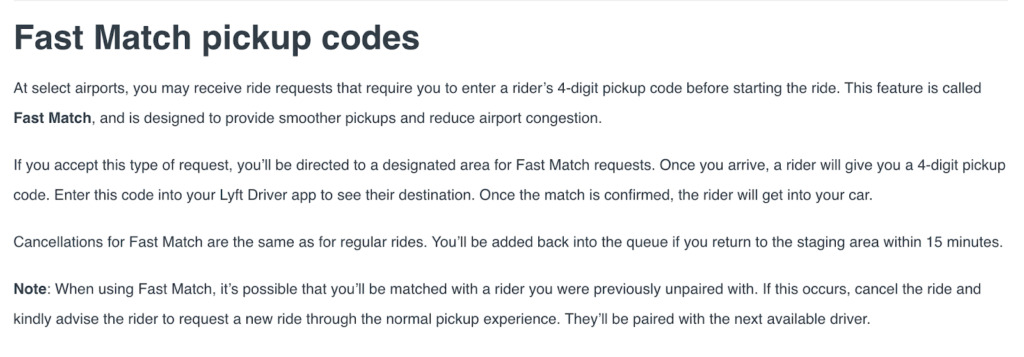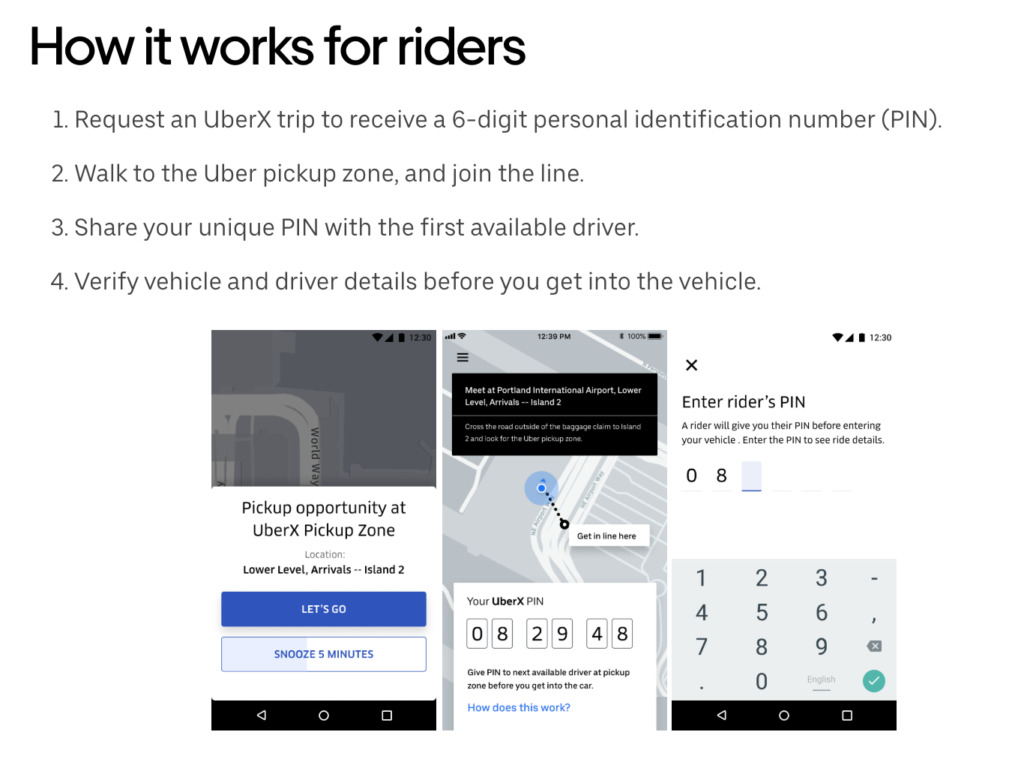Update (1/2020): We just released a brand new report examining the recent ridehail changes at LAX – you can read more about it here.
Uber and Lyft are now using a PIN pickup system at many airports to connect drivers and passengers and, potentially, decrease traffic and congestion. Senior RSG contributor Jay Cradeur covers how this system works for drivers and passengers and how drivers can use the system to their benefit.
It can be frustrating for both a driver and a passenger to miss each other, especially at the airport. Tensions run a bit higher at the airport because the driver has typically waited a fair amount of time in a queue to get assigned a ride. Add to this equation a travel-weary passenger who has been lugging several suitcases through the airport and you have a recipe for some unpleasant exchanges.
Recently both Uber and Lyft announced a new system to simplify the pickup process at just a few airports in the United States. This article will share the details of the new program offered by both Uber and Lyft.
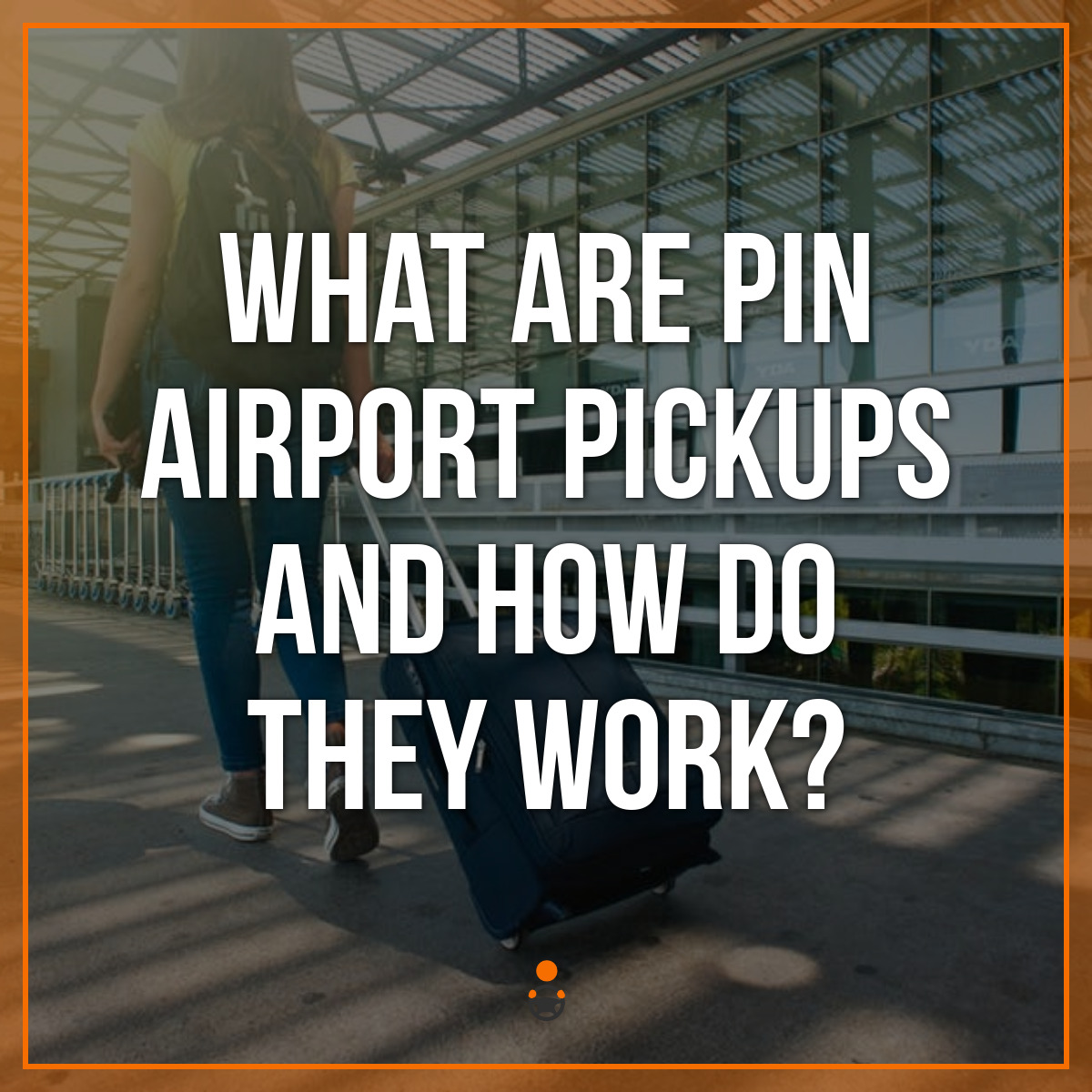
The Fundamental Theory Of The “PIN Programs”
The current airport pickup system requires a driver and a passenger to be matched up, meet at an assigned area and find each other. Lyft offers a few clues to make the connection process smoother. First, Lyft provides the driver with a picture of some of the passengers (those who provide the profile photo).
I find this to be very useful. I generally look at the hair color and style and then find my match. Also, the Lyft amp device will display a specific color for a specific passenger allowing the passenger to look for the correct car.
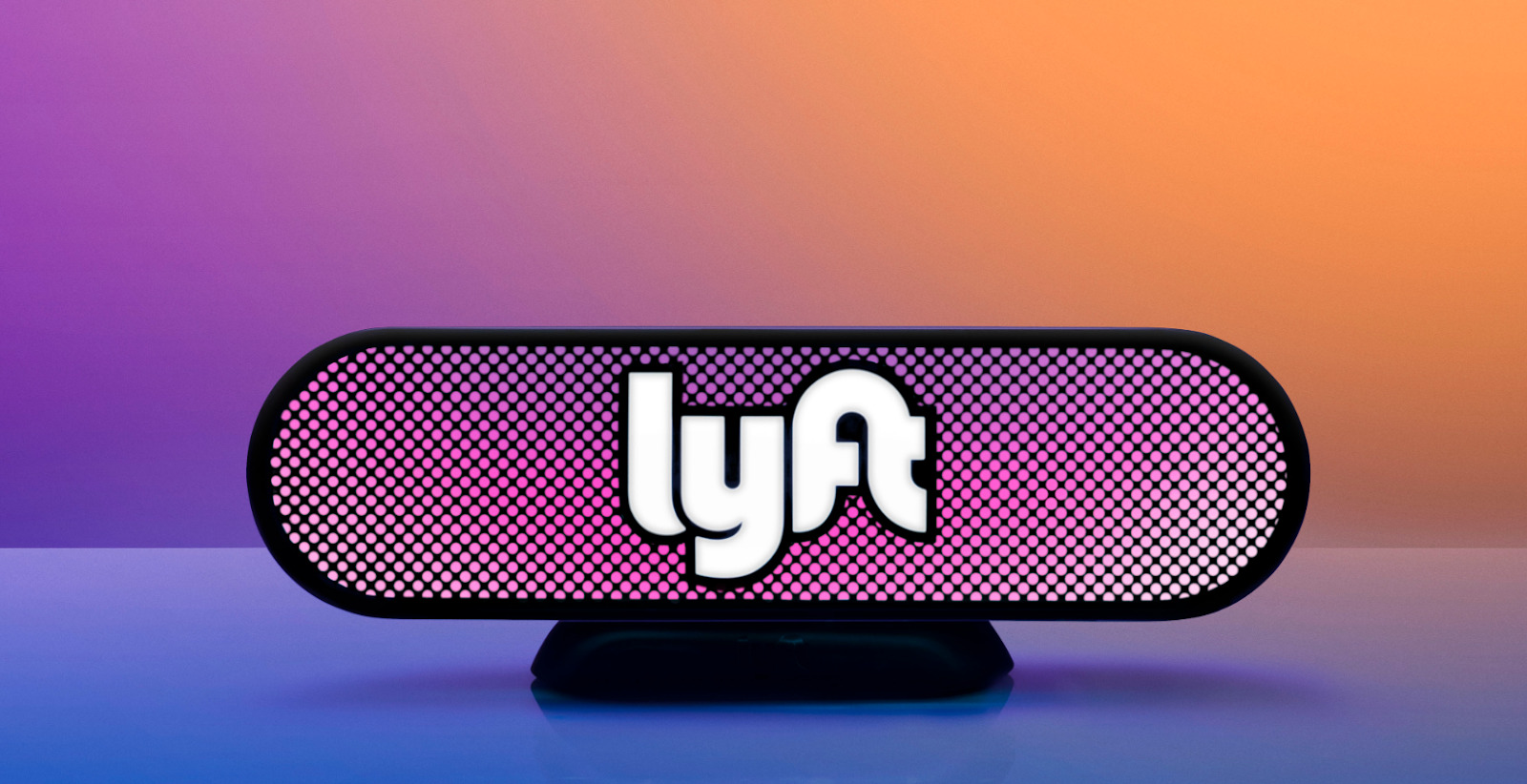
Not all drivers have amps that are properly set up, but when a driver does have it set up, this can be a valuable source of additional confirmation that the driver and passenger are a match.
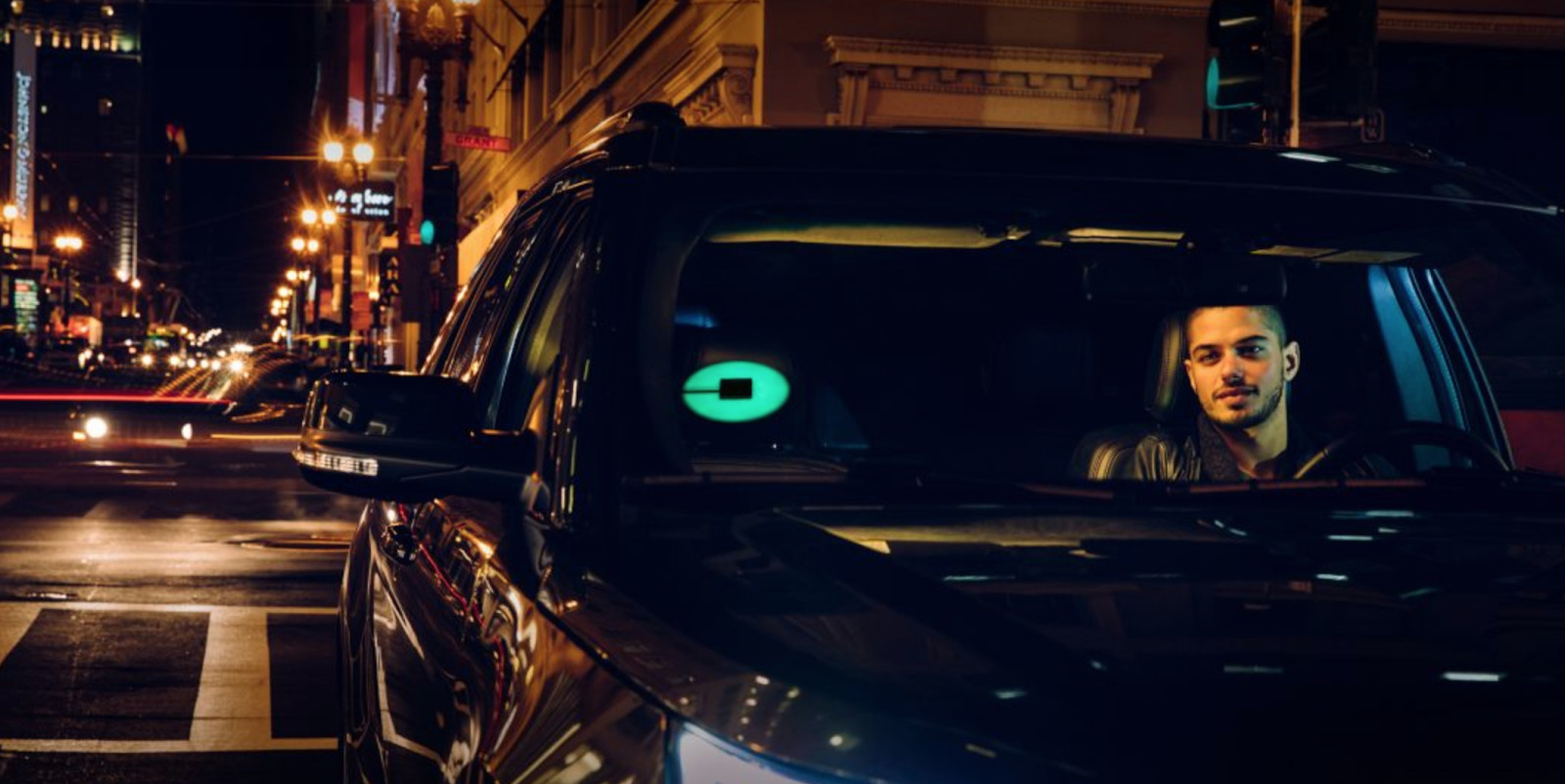
Uber also offers a color identification system through the use of its windshield light called a beacon. Uber does not provide passenger photos.
The new system, again only available in a few airports (Lyft in Portland – PDX, and New York – LGA, Uber in Portland), allows a passenger to get into any car. Once a passenger requests a ride, the passenger will be given a PIN code that will appear in-app. That code is then shared with a driver in the designated pickup area. It can be any driver in the designated line of cars.
Think of it like the old-school taxi lines. The driver will input the code, and the passenger and driver are then paired up. This eliminates the often difficult task of matching a car to a passenger. The first available passenger can be matched with the first available driver. This should provide significant time savings for both parties.
Lyft’s Fast Match Program
Lyft’s program is called Fast Match. It was launched in Portland in May and then expanded to New York’s La Guardia airport in July. Here is what the passenger sees on the app:
This code is then shared with the driver who inputs it into the driver app and the connection is made. Here is some information provided by Lyft on their website.
RSG Managing Editor Melissa Berry recently participated in Lyft’s Fast Match program at La Guardia airport in August, and found the process a little confusing but eventually straightforward.
“As a passenger, I’m used to being matched with a person – not a number. At LaGuardia, there were parking lot attendants who would confirm your PIN number and move you to the front of the line, where drivers were waiting to type in your passenger PIN number into their phone. Many passengers didn’t realize they had to request a ride at this shuttle area and waited in line maybe 5 minutes longer than usual, but it seemed very efficient for drivers. I could definitely see this working – if passengers can figure it out.”
Uber’s Pin-Matching Solution Program
Uber’s program, which they refer to as “Our Pin-Matching Solution,” appears to work exactly the same as Lyft’s program. Here is an image of the pertinent screenshots:
What Uber Shares About The Program
“Our PIN-matching solution was developed in 2016 to streamline pickups at high-volume, high-density event venues. Since then, we’ve implemented it in partnership with operators at more than 60 events worldwide. Over time, we’ve significantly improved the experience for riders and drivers.
Recognizing the potential to extend this innovation to airports, last year we adapted and tested it at BLR (Bangalore, India) with successful results. This led us to where we are today—making PIN matching available to transportation network company (TNC) customers at a US airport for the first time.
We see enormous potential for this solution to make a positive impact at airports, but we also know from previous testing that not every venue is a fit. At some locations, it’s far more efficient to retain existing pickup models due to capacity constraints and curb space availability”.
The Future Of The PIN System
This program is currently being tested and based on the results, we may see the PIN technology expanded to airports where it makes sense. I can certainly see this program expanding to the San Francisco airport, which has recently seen passenger wait time increase dramatically due to new pick up policies. As a passenger at SFO, I have had to wait for a minimum of 10 minutes for a pick up because all the drivers must come from a staging lot off airport property.
If cars could be lined up, waiting for passengers to arrive, this would certainly benefit the passengers by shortening pick up times. The only benefit I see for drivers is a slightly less difficult time finding a passenger.
Key Takeaways
It seems both companies are veering away from the Rematch system. With the Rematch system, as a driver delivering a passenger to the airport, I would be given priority over the cars in the staging lot and when possible, I would be immediately matched with a passenger, often in the same terminal.
I loved the Rematch system. I could bring a passenger to the airport, and then make a quick pick up and be on my way. This worked well for the passengers as well since they could request a ride and then I would be instantaneously matched.
The PIN system provides the same kind of benefits for the passenger. Unfortunately, drivers will still have to wait in line for a chance to pick up a passenger. If you are in a market in which your airport is far away from a city, you may want to wait. At an airport like San Francisco, you can drive 12 minutes and be back in a good residential area to make pickups.
Sitting in a staging lot is usually a waste of time. Time will tell if this new PIN style system works. Uber and Lyft will need to get feedback from both passengers and drivers in Portland and New York to determine the effectiveness and efficiency of the system. Drive safe out there.
Drivers, have you seen or been a part of this new PIN pickup system? Do you think it would work in your city after big events or at your airport?
-Jay @ RSG

